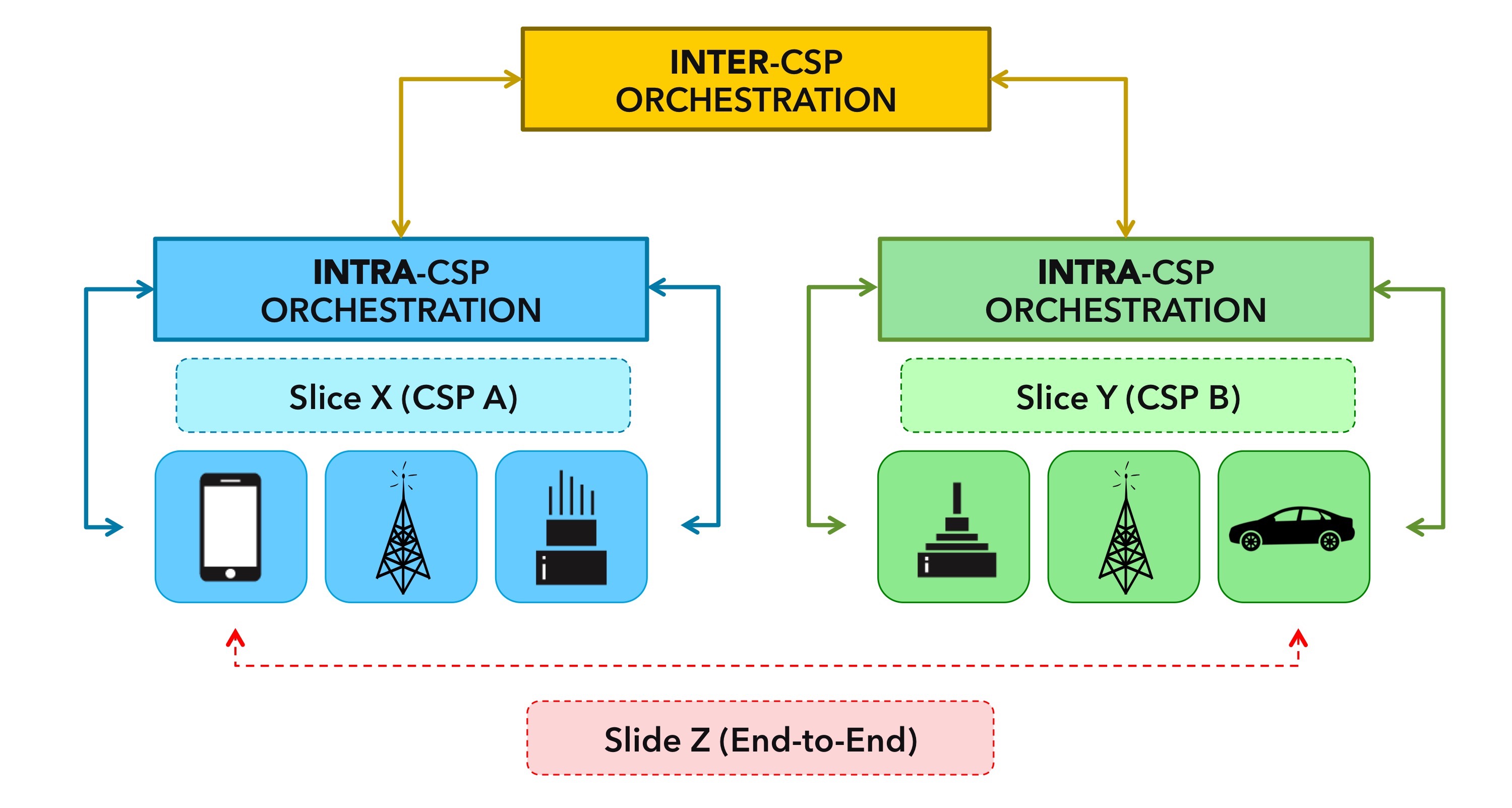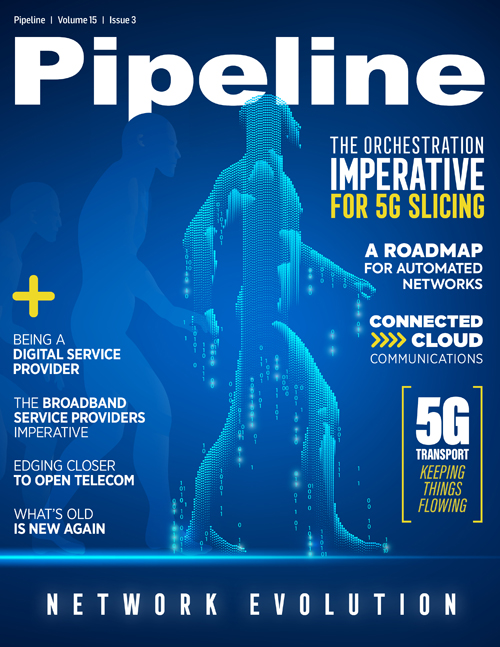Orchestration Imperative for 5G Slicing
By: Mark Cummings, Ph.D., Vinay Devadatta, Christos Kolias

Talk about 5G tends to center on the upsides—the new horizons, potential, and use cases that this next-generation network will make possible. While full of promise, that dialogue skirts the cold reality that 5G deployment will be very expensive. And that expense can only be justified if 5G fully meets its promise.
Key to realizing that promise is lowering the capital burdens CSPs must shoulder. This can best be accomplished by network slicing, which is sharing resources while improving products that allow for the construction of innovative end-to-end services from atomic units of resource that may transit multiple CSP domains. To successfully accomplish this slicing, CSPs must have distributed orchestrators that can negotiate with other orchestrators both inside and outside an individual CSP’s domain.
Early studies show that in order to actually deliver these promises, a complete deployment of 5G will require massive capital expenditures that a single operator may not be able to afford with current business or service structures. Effective network slicing can allow CSPs to share the expense of 5G network components while at the same time creating the ability to offer innovative new services that increase revenues.
Before diving into the details, let’s talk definitions. For the purposes of this article, network slicing is defined (consistent with 3GPP TR 21.905’s) as the process of presenting a set of network functions and the resources (eg. Basestations, wireline, fiber, satellite, switches or routers, ePC, CPU, storage, and so forth) that can be arranged and configured to form a logical network and/or service. Each network slice is independent and isolated from other slices, but it still runs on the same, shared infrastructure. Each slice is implemented on an end-to-end basis and can be dynamically created and discontinued.
Making this model work requires cooperation between divisions inside a CSP, between CSPs, and between CSPs and other service providers. With the growth of SDN, NFV, and other software-based technologies, orchestrators controlling segments of infrastructure are beginning to appear. Slicing requires a different kind of orchestrator. These slicing orchestrators must be able to function in a distributed fashion and negotiate with other orchestrators that are owned and operated by different entities, as illustrated in Figure 1.

Figure 1: Generic Multi Administrative Unit Multi CSP Slice Example
(click to enlarge)
Entities may be different administrative units within a single CSP (intra-CSP), or may be in different CSPs (inter-CSP) For example, Figure 1 shows a combination of both intra- and inter-CSP slicing.


















